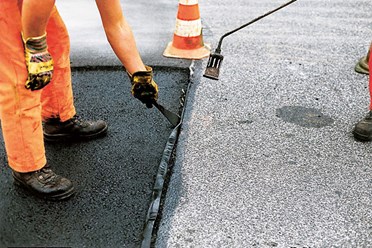Asphalt Repair: Essential Techniques for Long-Lasting Pavement
Asphalt Repair: Essential Techniques for Long-Lasting Pavement
Blog Article
Asphalt is a preferred material for paving roads, driveways, and parking lots due to the durability and relatively low cost. However, as time passes, it is susceptible to wear and tear from weather, traffic, and environmental factors. Proper maintenance and timely repair are very important to extending the lifespan of asphalt surfaces and ensuring safety. This informative article explores the many methods and best practices for drywall repair company nashville tn.
Common Asphalt Problems
Before delving into repair techniques, you need to understand the common issues that affect asphalt surfaces:
Cracks: These are the basic most common problems and may range from small, hairline fractures to large, gaping crevices. They often times result from thermal expansion and contraction, water infiltration, or high-traffic loads.
Potholes: These are formed when water seeps into cracks, weakening the pavement structure and causing it to destroy apart. Repeated freeze-thaw cycles exacerbate this problem.
Alligator Cracking: This pattern of interconnected cracks resembles alligator skin and usually indicates an inability of the underlying base or subgrade layers.
Raveling: This happens when the asphalt surface begins to break down, and aggregate particles are dislodged, ultimately causing a rough and uneven texture.
Depressions: These low areas within the pavement can collect water and are often caused by inadequate compaction during construction or even a weak subgrade.
Asphalt Repair Techniques
Several techniques are employed to repair asphalt surfaces, each suitable for specific types and extents of damage:
Crack Sealing and Filling:
Crack Sealing: This involves cleaning the crack and applying a fashionable or cold sealant to stop water infiltration. Crack sealing is really a preventative measure that will extend the pavement's life.
Crack Filling: This process involves filling the crack with asphalt emulsion, rubberized asphalt, or another filler materials. It's typically used for non-working cracks (cracks that won't experience significant movement).
Pothole Repair:
Throw-and-Roll: This quick method involves filling the pothole with asphalt patch material and compacting it having a heavy vehicle. This is a temporary fix often used during wintertime when other methods are not feasible.
Semi-Permanent Repair: This technique requires removing debris and water from your pothole, cutting clean edges, applying a tack coat, filling with patch material, and compacting. It has a more durable repair compared to throw-and-roll method.
Full-Depth Patching: This involves removing the entire damaged area, such as the underlying base layers, and replacing it with new asphalt. Oahu is the most comprehensive and sturdy repair method.
Surface Patching:
Surface patching addresses localized regions of distress by removing and replacing the most notable layer of asphalt. It's ideal for minor surface defects and raveling.
Overlay:
An asphalt overlay involves applying a new layer of asphalt on the existing pavement. This method is used to bring back surface quality and add structural strength without taking out the existing pavement. Proper preparation, including milling the surface, is essential to get a successful overlay.
Infrared Asphalt Repair:
This method uses infrared technology to heat the damaged area and surrounding pavement. The softened asphalt is then raked and blended with new material before being compacted. Infrared repair is efficient for small areas and supplies seamless, durable patches.
Sealcoating:
Sealcoating is really a preventative maintenance technique that involves applying a safety coating to the asphalt surface. It can help to protect against UV rays, water, and chemicals, extending the life span of the pavement and enhancing its appearance.
Recommendations for Asphalt Repair
To ensure the longevity and effectiveness of asphalt repairs, follow these guidelines:
Regular Inspections: Conduct routine inspections to identify and address problems early before they worsen.
Proper Preparation: Make sure the damaged area is thoroughly cleaned willing and able before applying any repair material. Proper preparation is important for the longevity of the repair.
Use Quality Materials: Purchase high-quality repair materials ideal for the specific form of damage and environmental conditions.
Professional Application: Consider hiring experienced professionals for significant repairs to make certain proper techniques and equipment are employed.
Timely Maintenance: Regular maintenance, including sealcoating and crack sealing, can prevent minor issues from developing into major problems.
Conclusion
Asphalt repair is vital for maintaining safe and functional pavements. Knowing the common conditions that affect asphalt as well as the various repair techniques will help property owners and managers make informed decisions about maintenance and repairs. Regular inspections, proper preparation, and timely interventions are step to extending living of asphalt surfaces and avoiding costly replacements. Following best practices and buying quality materials and services, you can make sure your asphalt pavement remains in excellent condition for years to come.